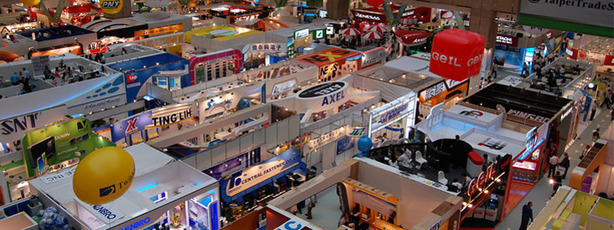
Computex 2009: A Look Back At What Happened
Over the past few weeks, we’ve been out in Taipei, Taiwan, following events as they unfolded at what's the most important tradeshow of the year for bit-tech. It’s where many of the biggest companies in the business of making products for computer hardware enthusiasts show off their latest wares.The show’s organisers claimed that visitor numbers were up; however, judging by how full the show floor was, the reality was quite the opposite – numbers were down by a sizeable amount. But that wasn’t a bad thing in our eyes, because it made for a much more manageable show schedule on our part.
In terms of major product announcements, there weren’t as many as we’ve seen in previous years – the major exhibitors seemed to focus more on what was coming later in the year, rather than what they were shipping today. That didn’t mean there weren’t a few hidden gems on the show floor though.

Let's just forget about Vista, k?
Windows 7 was the biggest trend at the show – it was simply everywhere. Every manufacturer was pushing it and it’s clear that they were looking to quickly forget Vista as soon as possible. Almost every machine at the show was running the Windows 7 Release Candidate.Microsoft also had a strong presence at the show and it announced the Windows 7 release date during its press conference. Mark your calendars for 22nd October, as that’s when Microsoft said it will deliver Windows 7 to the market with its partners.
Not surprisingly, with AMD, Intel and Nvidia being three of Microsoft’s biggest partners, they were also singing the software giant’s praises throughout the show. They see Windows 7’s launch as a major opportunity to pull the industry out of the slump it has been in since late 2007 when the growing economic crisis started to impact sales of new PCs and components.
“Today, we’re previewing AMD’s DirectX 11 graphics processor to build enthusiasm for this key technology so developers will have games available at launch and shortly thereafter,” said AMD’s Rick Bergman during the company’s Computex press conference where it demoed DirectX 11 technology for the first time. “With the benefits it delivers to gaming, applications and Windows 7, developers are lining up to get their hands on our hardware, and we’re confident that consumers will too.”
Nvidia’s Jen-Hsun Huang is never one to mince his words and he described Windows 7 as “the world’s most important OS” during his keynote address on day zero. His sidekick and key ally

Intel was also keen to highlight some of the new OS’s benefits to us, as it revealed Windows 7’s improved multi-threading support, which will help to improve power consumption and battery life. An Intel software engineer explained how the Windows 7 kernel changes the way threads are handled by improving thread affinity. The new kernel locks threads to particular cores in order to allow unused CPU cores to enter low power C-states when they’re not in use – called thread parking – providing the CPU and motherboard supports this of course.
It wasn’t all good news for Microsoft though, as some partners were annoyed with the way certain things have been banned. Take hybrid storage for example – Microsoft has banned netbooks from using it with Windows 7, which is frankly a little disappointing for consumers because the technology showed some promise.

MSI MPG Velox 100R Chassis Review
October 14 2021 | 15:04








Want to comment? Please log in.